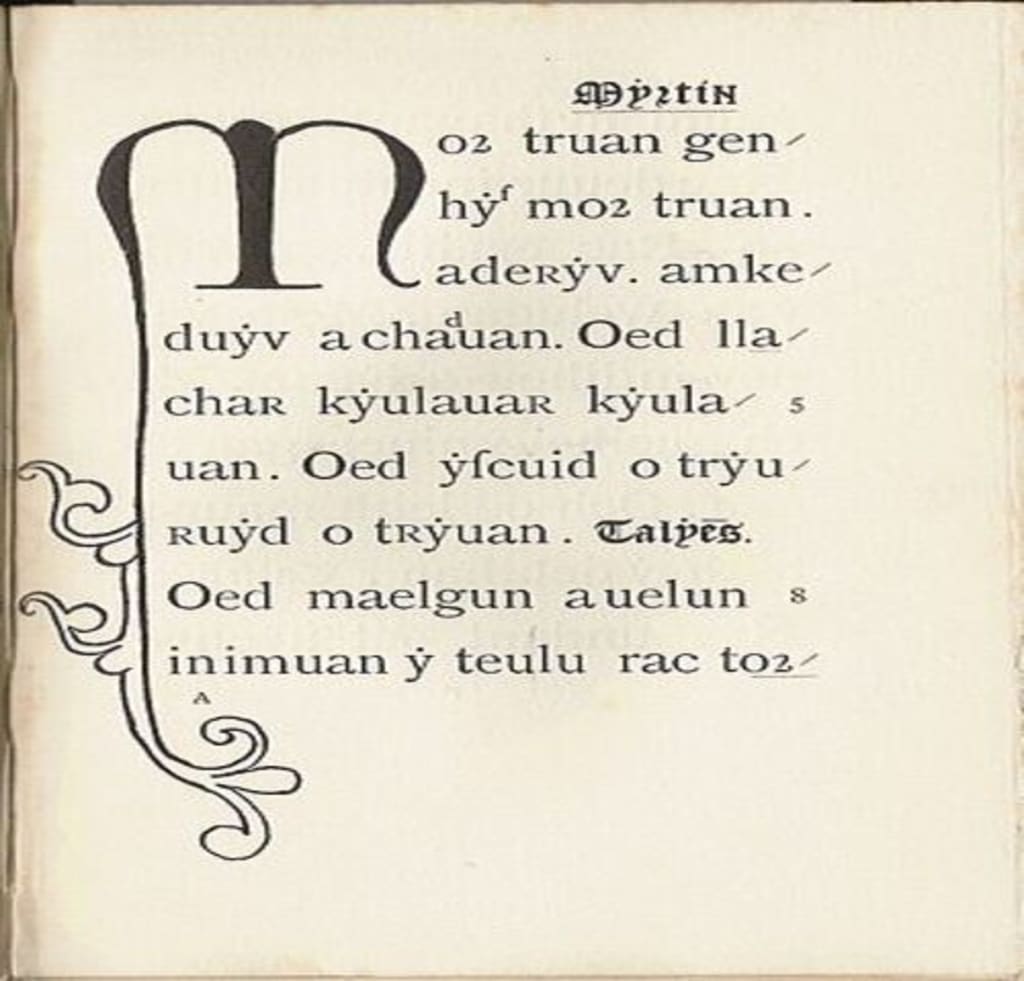Unveiling the Black Book of Carmarthen: A Window into Medieval Welsh Heritage
History

The Llyfr du Caerfyrddin, or the Black Book of Carmarthen, is a captivating manuscript that offers a window into the medieval Welsh world. This ancient book, dating back to the mid-13th century, is not just a collection of texts; it is a treasure trove of early Welsh poetry, myth, and lore. Its pages are filled with stories and poems that echo the voices of a bygone era, providing insights into the cultural and literary heritage of Wales. The Black Book of Carmarthen is one of the oldest surviving manuscripts written in Welsh, making it an invaluable artifact for historians, linguists, and literature enthusiasts alike.
The Black Book of Carmarthen is named after the town of Carmarthen in southwest Wales, where it is believed to have been compiled. Its title derives from the black binding that encases the manuscript, a somber exterior that belies the richness of its contents. This manuscript is written on vellum, a parchment made from animal skin, which was a common material for important documents in the medieval period. Despite its age, the text has remarkably survived the ravages of time, offering a direct link to the thoughts, beliefs, and artistry of medieval Welsh society.
What makes the Black Book of Carmarthen particularly fascinating is its content. The manuscript is a compilation of poems and prose, many of which are attributed to the legendary Welsh poet Taliesin. These works encompass a range of themes, including heroism, prophecy, and the natural world. Among the most notable poems are those that pertain to the legendary figure of King Arthur and his knights, weaving together myth and history in a way that has captivated readers for centuries. The Black Book also contains religious texts and devotional poetry, reflecting the spiritual life of medieval Wales.
The language of the Black Book of Carmarthen is Middle Welsh, a historical form of the Welsh language that was spoken between the 12th and 14th centuries. For modern readers, this presents both a challenge and an opportunity. The manuscript provides a rare glimpse into the linguistic evolution of Welsh, preserving words and phrases that have since fallen out of common usage. Scholars of Welsh linguistics and philology find in its pages a rich resource for understanding the development of the language and its literary traditions.
One of the most compelling aspects of the Black Book of Carmarthen is its portrayal of Welsh identity and mythology. The texts within its pages celebrate the heroes, landscapes, and legends of Wales, reinforcing a sense of national pride and cultural continuity. The tales of Arthurian legend, in particular, highlight the interconnectedness of Welsh mythology with the broader corpus of Celtic and European myths. These stories, with their blend of magic, adventure, and moral lessons, continue to resonate with readers and storytellers today.
The preservation of the Black Book of Carmarthen is a story of dedication and scholarship. Over the centuries, the manuscript has been housed in various locations, including monasteries and private collections, before finally being deposited in the National Library of Wales, where it remains today. Efforts to digitize the manuscript have made it accessible to a global audience, allowing more people than ever to explore its contents and appreciate its historical significance.
In the digital age, the Black Book of Carmarthen continues to inspire and educate. Researchers use advanced technologies to analyze its text, uncovering new insights into its origins and the scribes who created it. Meanwhile, contemporary artists and writers draw upon its themes and stories, finding fresh relevance in its ancient verses. The Black Book serves as a reminder of the enduring power of literature to bridge past and present, connecting us with the thoughts and experiences of those who lived centuries ago.
For those interested in exploring the Black Book of Carmarthen, the digitized version available through the National Library of Wales offers an invaluable resource. This online access allows users to view the manuscript in high resolution, study its intricate details, and delve into its captivating narratives. The digital preservation of such manuscripts ensures that they remain available for future generations, fostering an ongoing appreciation for the rich cultural heritage they represent.
In conclusion, the Llyfr du Caerfyrddin, or the Black Book of Carmarthen, is more than just an ancient manuscript; it is a testament to the enduring legacy of Welsh literature and culture. Its pages, filled with poetry, myth, and history, offer a unique glimpse into the medieval Welsh world. As we explore its contents, we are reminded of the power of storytelling to transcend time and connect us with our cultural roots. The Black Book of Carmarthen remains a cherished artifact, celebrated for its historical value and its contribution to our understanding of Welsh identity and heritage.
About the Creator
Marveline Merab
“History never repeats itself. Man always does.”
― Voltaire
Enjoyed the story? Support the Creator.
Subscribe for free to receive all their stories in your feed. You could also pledge your support or give them a one-off tip, letting them know you appreciate their work.






Comments
There are no comments for this story
Be the first to respond and start the conversation.